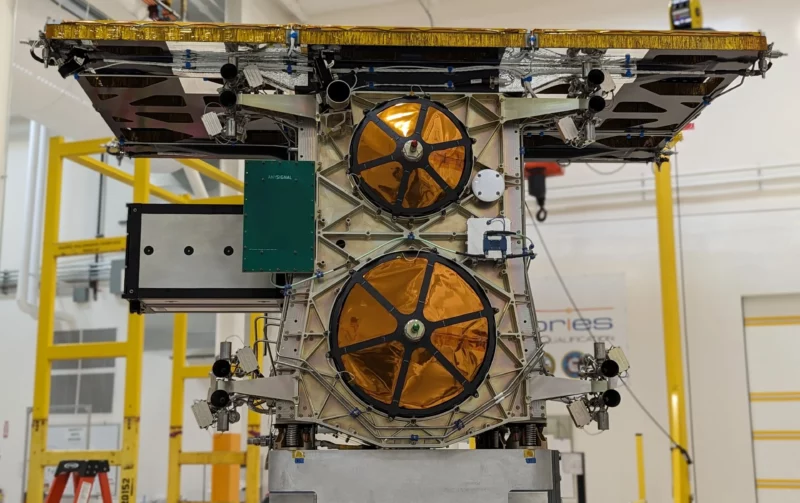
Impulse space
SpaceX launched its ninth “Transporter” mission from California on Saturday, carrying dozens of small and medium-sized satellites into low-Earth orbit.
The benefit of this launch for customers is that they can rely on regular, low-cost access to space on the reliable Falcon 9 rocket. The downside is that the satellites are all launched into a basic orbit, and if they want to reach a different altitude or inclination, they have to bring their own propulsion along for the ride.
This led to the advent of various companies’ “last mile” services, capable of launching small add-on spacecraft into space. One of the most interesting of these is Impulse Space, founded two years ago by rocket scientist Tom Mueller, who was a founding employee at SpaceX before leaving in 2020.
During Saturday’s launch, Mueller’s career came full circle when a Falcon 9 rocket launched Impulse Space’s first vehicle, the Mira spacecraft, on a test flight. After launch, Mira called the “LEO Express 1” mission home to report that all was well. So, the work is off to a promising start.
Anywhere in the solar system
For Muller, running Impulse Space was a new experience after his time at SpaceX. There, he led the development of the Merlin engines that powered the Falcon 9 rocket and oversaw all components of rocket and spacecraft propulsion. As a vice president and then a consultant, he was able to focus on the technical side rather than the business aspects.
“At SpaceX, I’m definitely not involved in the fundraising and business side and running an entire company,” he told Ars in an interview earlier this year. “So there’s a lot to learn. But I think I’m getting better at it. Of course, technically, I feel like we’re very strong. We have a great shuttle.”
Fully fueled, the Mira spacecraft weighs about 650 pounds (300 kg) and is about the size of a dishwasher. The vehicle is designed to maximize its delta-V capability, so it is powered mostly by propellant and fuel tanks and Sief thrusters operating at a specific thrust (ISP) of 290. “It’s a pretty whiz-bang little machine,” Muller said.
SpaceX has expanded the ability of space startups to reach orbit with low-cost and reliable launches, Mueller said, and plans to take Impulse customers to the next level.
“SpaceX opened access to orbit by lowering the cost of access space, and now we want to open access to higher orbits and higher energy orbits, and to other bodies in the inner solar system,” Mueller said. “We want to make it cheaper and easier to get anywhere in the solar system.”
Mars on the horizon
Impulse Space has already announced some clients for Meera Orbit Fab, and plans to fly the Mira spacecraft on SpaceX’s Transporter-11 and -12 missions next year. Muller hopes that if Meera demonstrates her potential, more clients will sign on.
“We’ve signed a few clients,” he said. “We have people who are interested, but they want to see us fly successfully, and you know, I can’t blame them. I think, really, once we fly successfully the floodgates will open on this product line. If we go out and do all the things we want to do on this first flight , we hope a lot of people will sign up.”
The company’s Mira vehicle can serve in low-Earth orbit, and a radiation-hardened modified version is planned for low-Earth orbit. Impulse Space is also developing Rigel, a powerful thruster for the Mars Lander and Large Orbiter. A robotic mission to Mars could fly by 2026 on a Terran R rocket developed by Relativity Space.
Despite a tough fundraising environment, Impulse Space continues to find funding support. In July, the company announced it had raised $45 million in Series A funding led by RTX Ventures. A year ago, Impulse raised $30 million. So Muller raises funds and runs his own company.